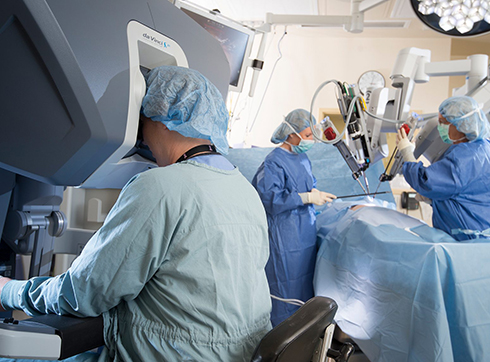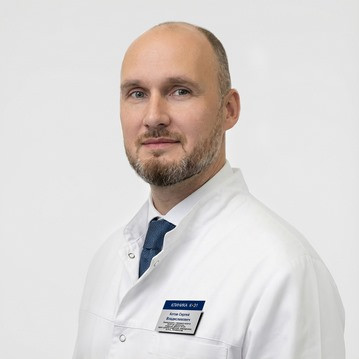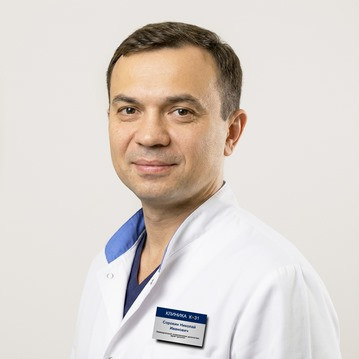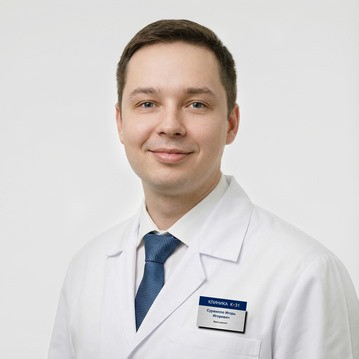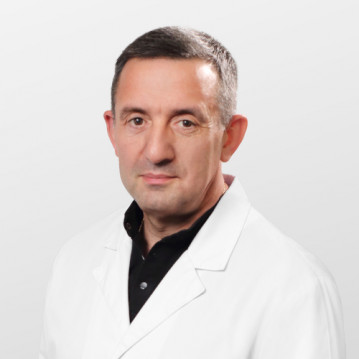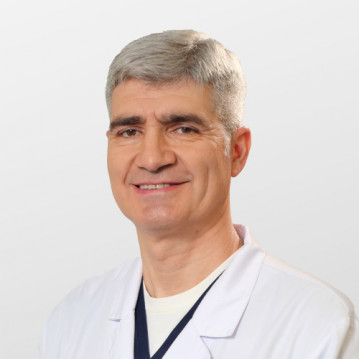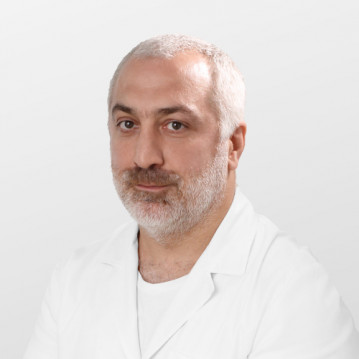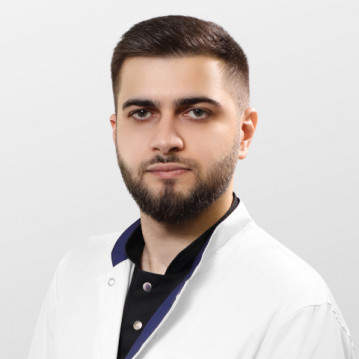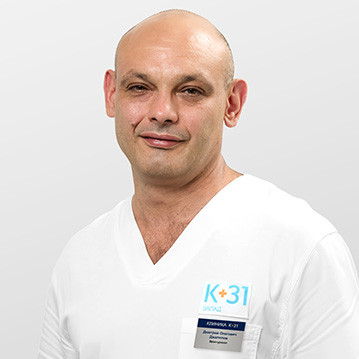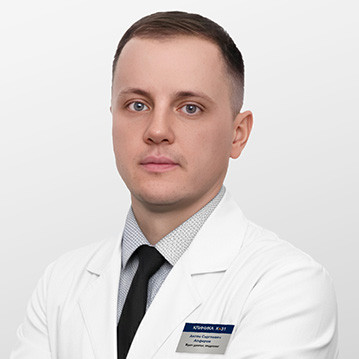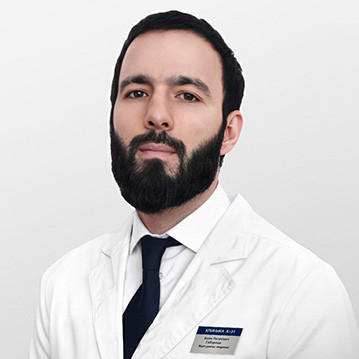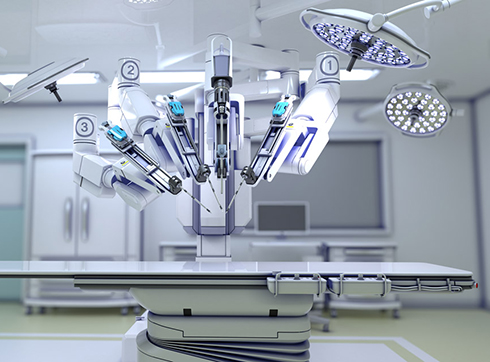
The most effective treatment for prostate cancer today is the removal of the prostate gland - radical prostatectomy. Together with the gland, seminal vesicles and lymph nodes are usually removed. Until recently, radical prostatectomy for prostate cancer was performed using a conventional cavitary surgery or laparoscopic. Today, prostate cancer in modern clinics is treated with da Vinci robot. More than 80% of patients with prostate cancer undergo robotic prostatectomy in the United States. This method of treatment is more effective and reduces the risk of such side effects of radical prostatectomy, like urinary incontinence and impotence after surgery.
Doctors of our clinic in Moscow are treating prostate cancer with the help of the da Vinci robot. To find out more about the service and sign up for a consultation with a urologist, call or leave a request on the website, and we will call you back as soon as possible.
What is da Vinci prostatectomy?
Da Vinci prostatectomy, or robot-assisted laparoscopic da Vinci prostatectomy, is an operation to remove prostate cancer, namely, the removal of the entire or part of the prostate affected by the tumor using a da Vinci surgical robot.
Robot prostatectomy is similar to laparoscopic surgery. Both procedures are performed through several small punctures with similar-sized instruments. But during laparoscopic surgery, the surgeon holds the instruments in his hands. And with the robotic one, the surgeon controls the robot's instruments through the joystick and controls the process, watching it through the console screen. At the same time, the da Vinci robot reduces the range of motion of human hands, does not allow tremor and random trembling, and its instruments have more degrees of freedom than human fingers and hands or laparoscopy instruments, and can rotate in different directions and bend at any angle. This allows for more subtle manipulations during the removal of prostate cancer with less tissue damage and a minimum of complications after surgery.
The da Vinci robot is not subject to fatigue and maintains the accuracy of movements regardless of the duration of the operation. The surgeon at this time is less tired, is in a more comfortable position than bending over the operating table during a traditional or laparoscopic operation, and maintains concentration longer. The console displays a three-dimensional image of the operation with the necessary multiple magnification and viewing angles that are not available with other types of surgical interventions.
Preparation for robotic prostatectomy takes longer than for laparoscopic surgery, as the instruments and camera of the robot must be installed, but then the process is faster. Treatment of prostate cancer with da Vinci has significantly changed and brought prostate surgery to a new level and made life easier for patients after surgery.
How does robotic prostatectomy work
The patient is under anesthesia during the robot-assisted operation. Several punctures are made in the front wall of the abdomen, which provide access to the instruments of the da Vinci robot to the internal organs and prostate cancer tumors. The surgeon at the console, using the interface and joystick, controls the robot manipulators in real time, being at some distance from the operating table. But the surgeon's assistant is constantly on duty near the patient.
During the operation, a small hole is made in the fascia of the bladder, through which the prostate gland and seminal vesicles are removed. But the fascial-ligamentous cover of the bladder and urethra is preserved during robot-assisted prostatectomy, which contributes to the rapid restoration of normal urination after surgery. The prostate gland is removed while preserving the nerve bundles located on the sides of it, due to which erectile (sexual) function is also preserved after the operation. But if the nerves are affected by prostate cancer, they are also removed to prevent recurrence. After removal of the prostate, the bladder is sutured with absorbable sutures to the urethra. Highly aesthetic seams are applied from the outside.
Robot prostatectomy lasts 2-3 hours, which is longer than open or laparoscopic surgery. But the accuracy of the robot-assisted procedure is much higher, since the prostate gland affected by cancer is carefully removed from the body, and there is much less damage to surrounding tissues and, accordingly, pain after surgery. The da Vinci robot makes it possible to radically cure prostate cancer with a minimal risk of recurrence.
Preparing for da Vinci robotic prostatectomy
The need for radical prostatectomy can only be determined by a doctor based on the results of examinations, during which the size of the tumor, the stage of prostate cancer, the spread of the cancerous process to the lymph nodes and other organs and tissues are determined.
Before the operation to remove prostate cancer, even a month before it, it is worth losing excess weight and playing sports, as this will speed up the rehabilitation period and allow you to restore the function of continence faster.
Hospitalization in the hospital before robotic prostatectomy is usually carried out the day before the operation. The patient will need to undergo a series of examinations (ECG, ultrasound, X-ray, gastroscopy, etc.) and pass blood and urine tests.
During examinations, contraindications to radical prostatectomy may be found. They are:
- inflammation of the prostate, bladder and other pelvic organs;
- infections;
- diseases of the circulatory system;
- conditions and pathologies in which anesthesia is impossible.
Some of the contraindications are temporary and removable, which makes the removal of prostate cancer during robotic prostatectomy possible for this patient.
Side effects of radical prostatectomy and their severity after robotic surgery
Urinary incontinence after prostate cancer removal
Incontinence is the most common side effect of radical prostatectomy and resolves gradually in most patients some time after surgery (recovery may take up to 9 months). This is also the most unpleasant effect of prostate cancer treatment, as you have to use special pads or diapers. And in some cases, stress incontinence (coughing, physical exertion, etc.) persists throughout life.
The ability to retain urine depends on the condition of the internal organs of the patient, the condition of the bladder, which can also be affected by tumor processes, as well as the technique of radical prostatectomy. In the later stages of prostate cancer, it is important to save the patient's life, so the functional results and the ability to retain urine after surgery go by the wayside. But in the early stages of prostate cancer, it is important to preserve the urethra and bladder neck as much as possible. There are different ways to perform a radical prostatectomy, and robot-assisted surgery is one of the best options for maintaining urinary continence after surgery. In some cases, its results are even better than perineal prostatectomy.
Erectile dysfunction after radical prostatectomy
Such consequences occur when the neurovascular bundles that are adjacent to the capsule of the prostate gland and the muscles of the pelvic floor are damaged. If the prostate cancer has spread to the nerves, they will need to be removed. But in the early stages, they can be saved if a nerve-sparing technique is applied. Its use is possible during any surgical operation, but robotic prostatectomy provides the best opportunities for such a delicate procedure.
Rehabilitation after robotic prostatectomy
Recovery after a robotic prostatectomy is almost the same as recovery after a laparoscopic procedure. Immediately after the operation, the patient is put to rest, he can be kept in intensive care or in the intensive care unit. But on the second day he is transferred to the urology department and in most cases he can sit down and try to walk. On the third day, the patient usually returns to his usual way of life, with the exception of physical activity, which will have to be refrained from for about three more months. A week later, an X-ray examination is performed and if everything is fine, the urethral catheter installed during the operation is removed and the sutures are removed. The entire recovery period takes 1-2 weeks.
After radical prostatectomy for prostate cancer, you will need regular check-ups and PSA tests every three months.
